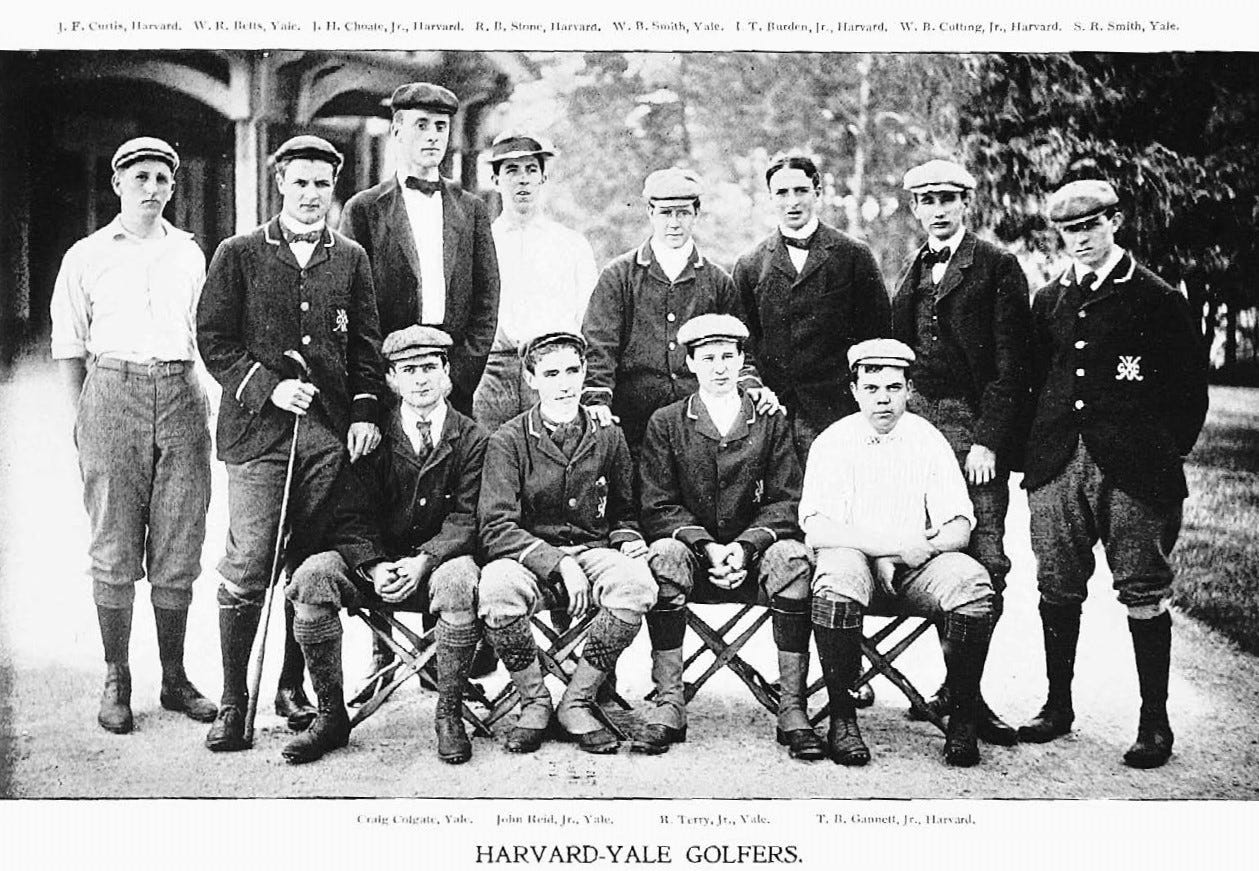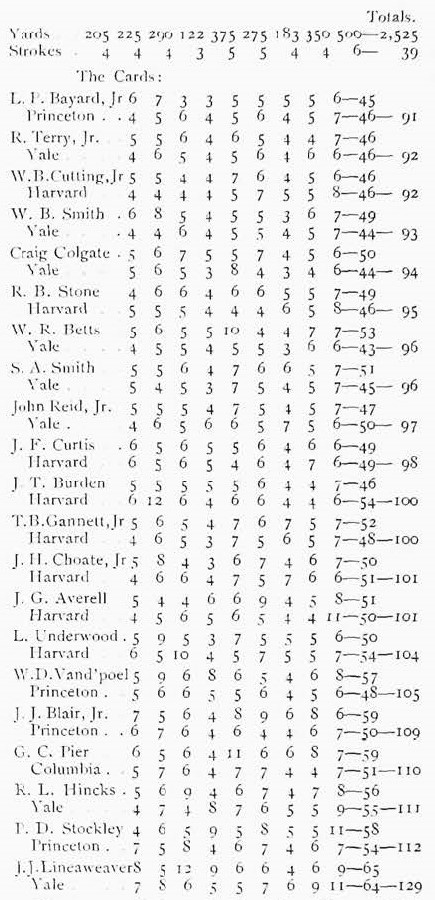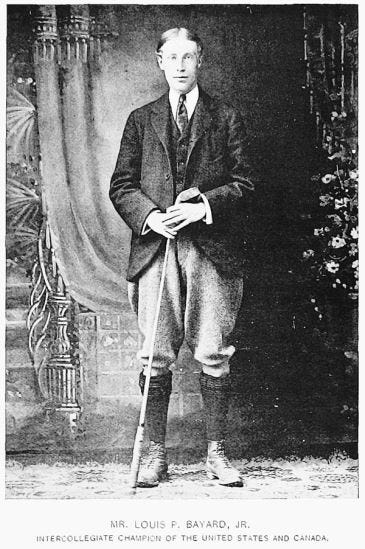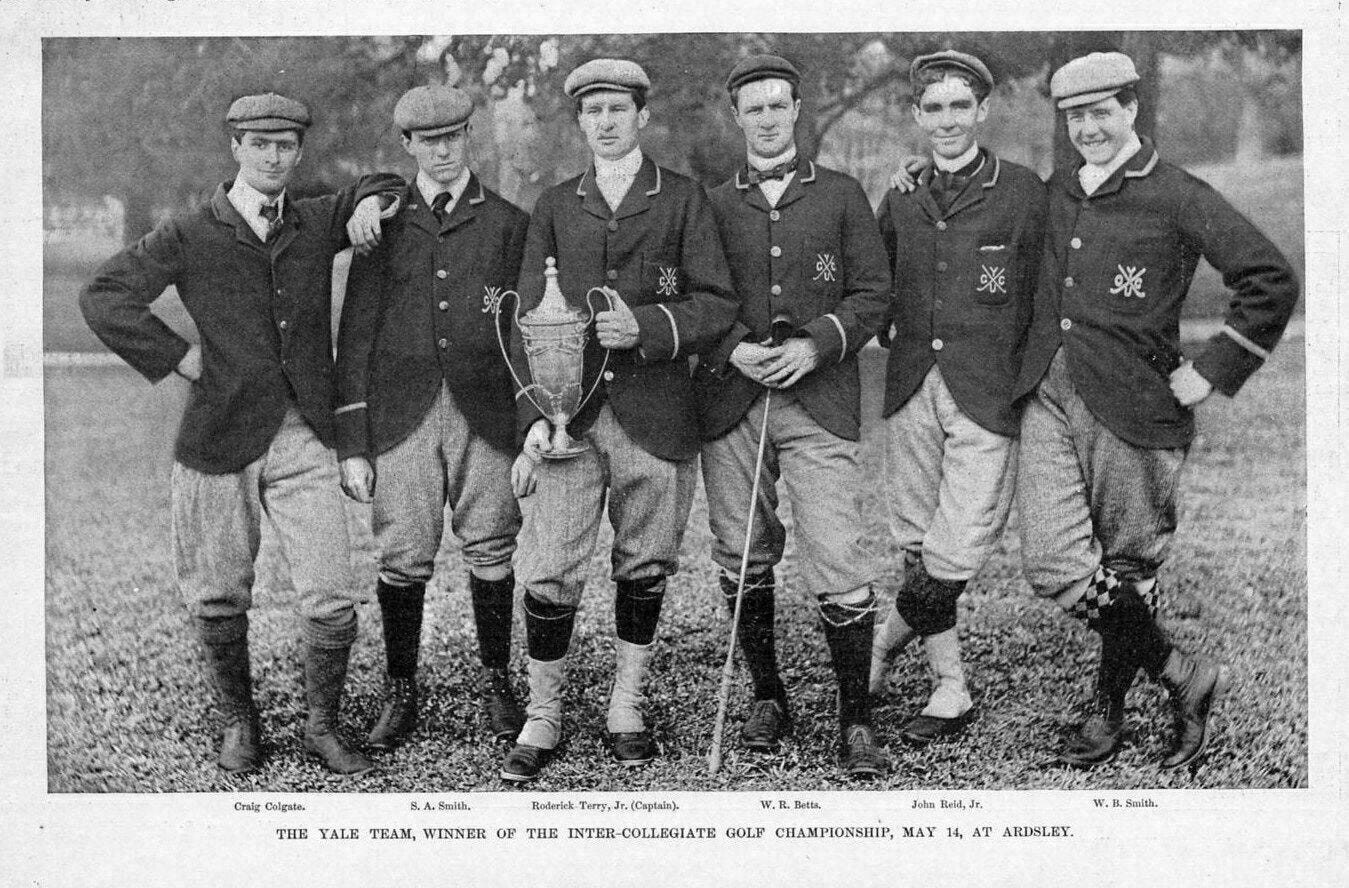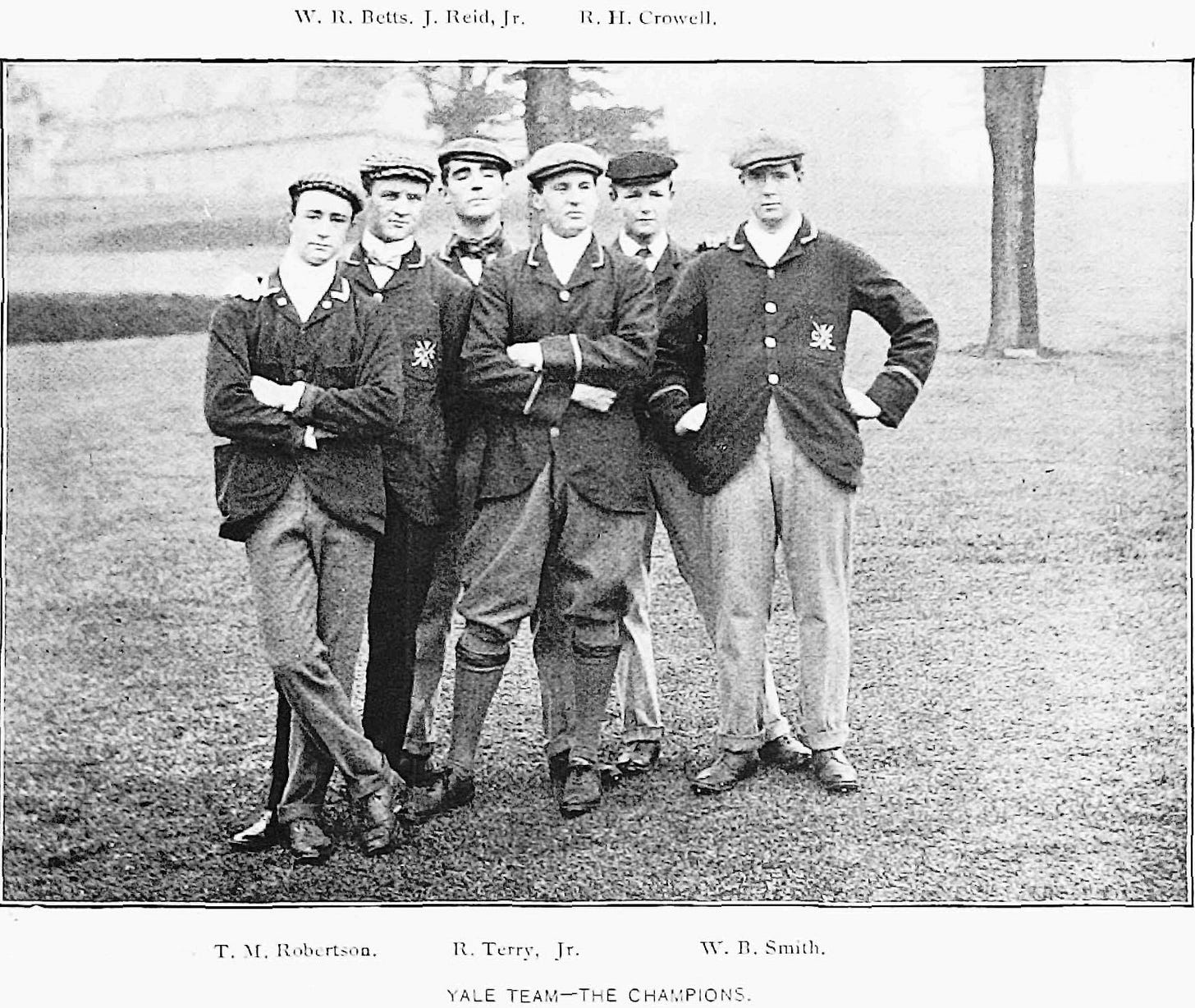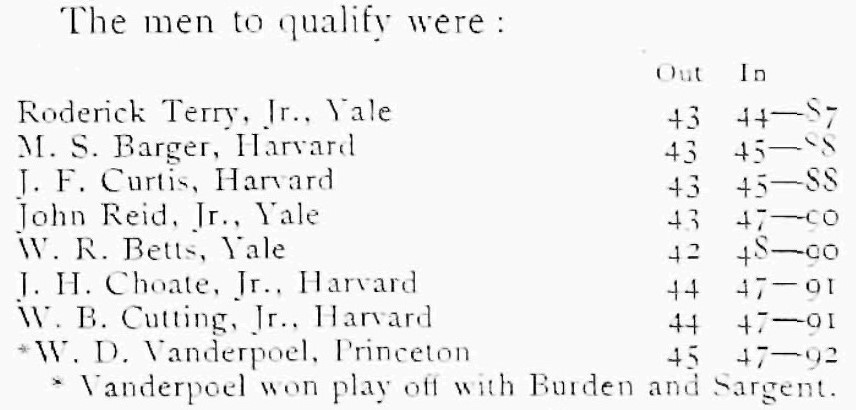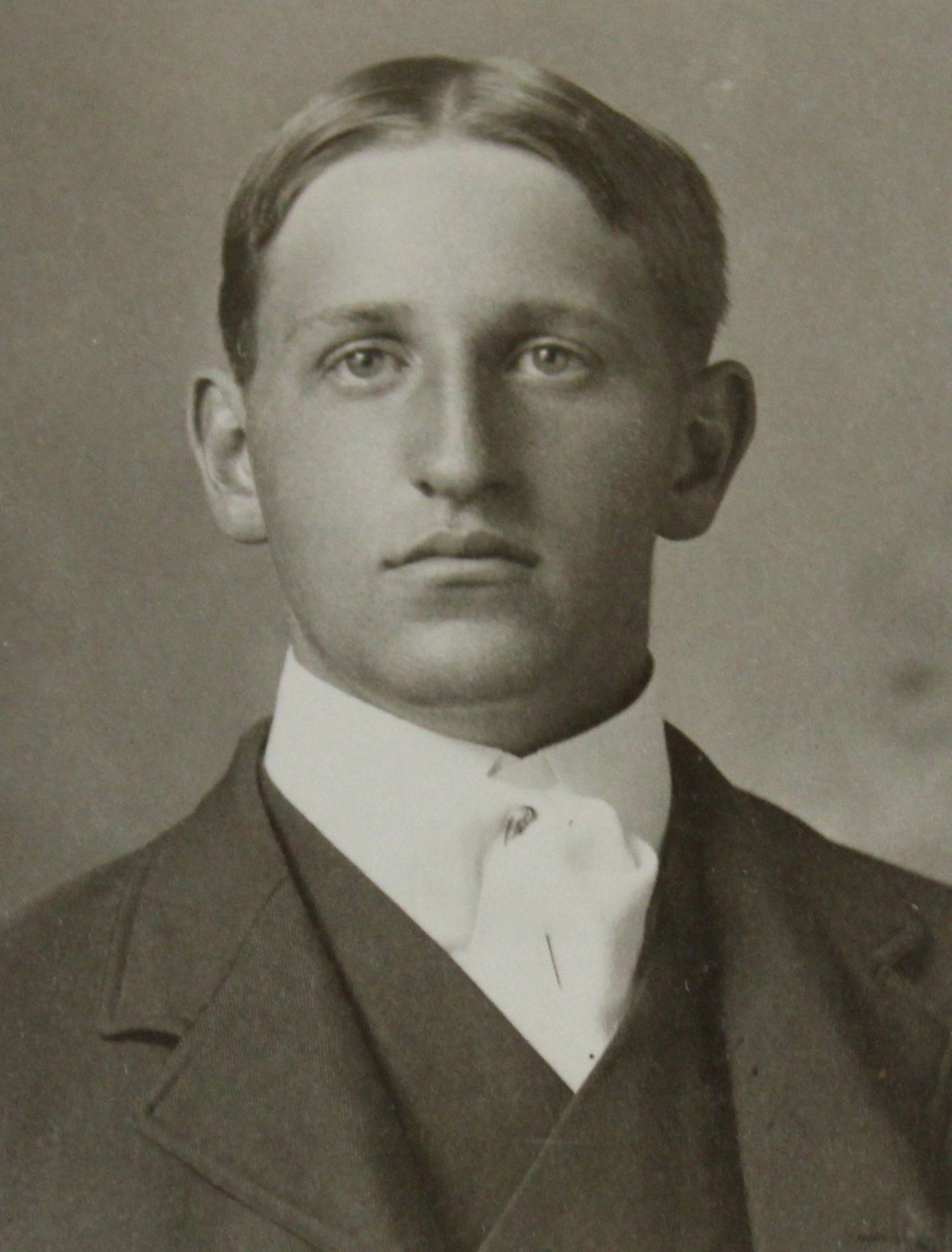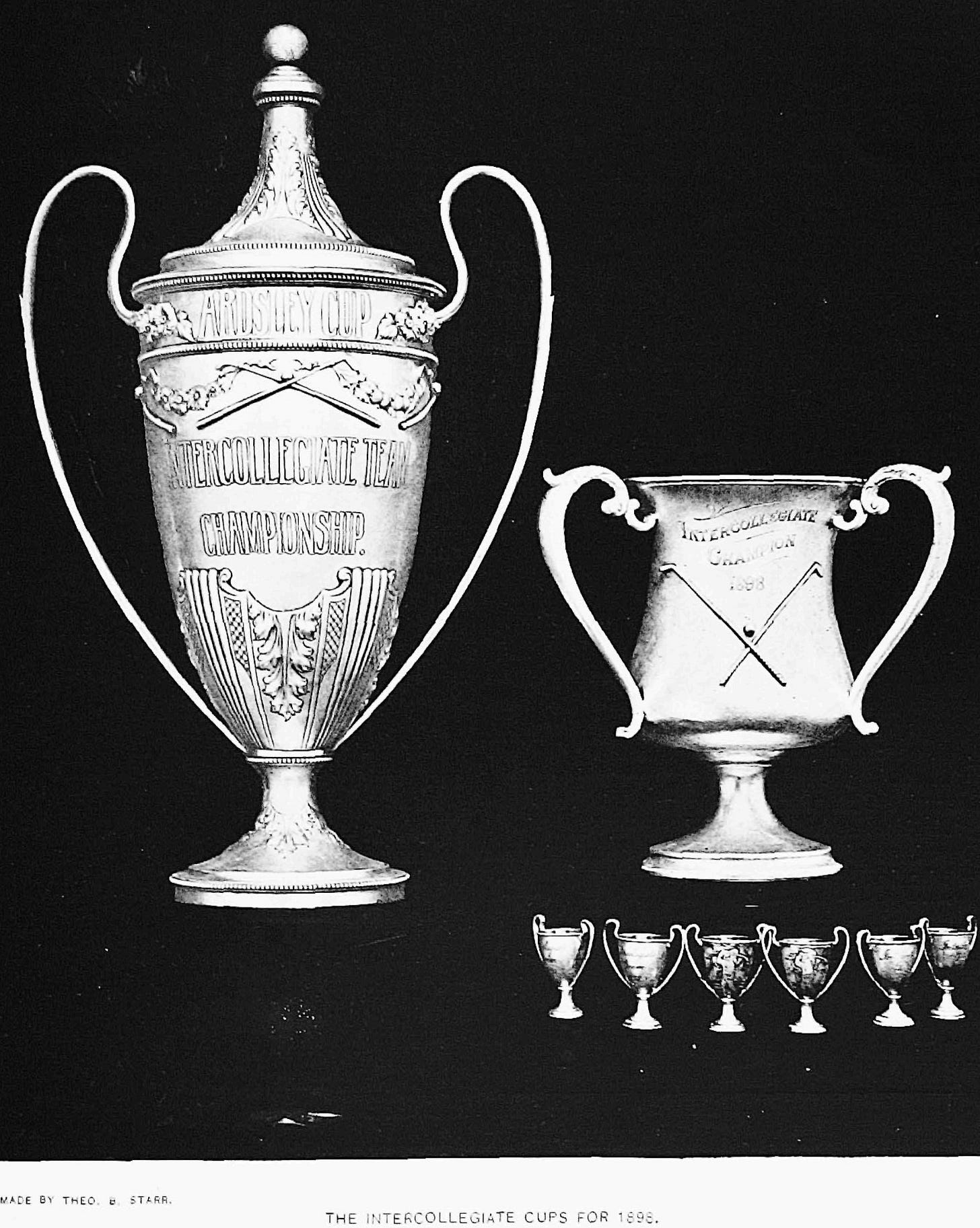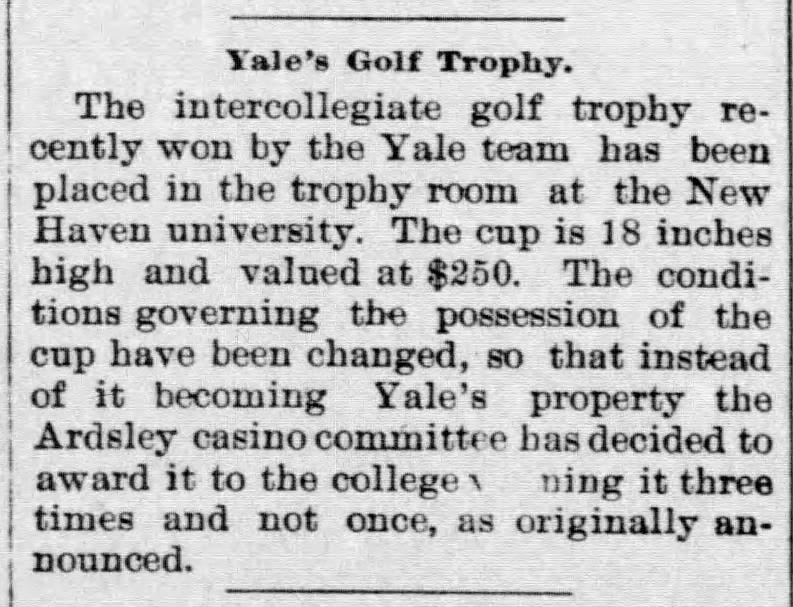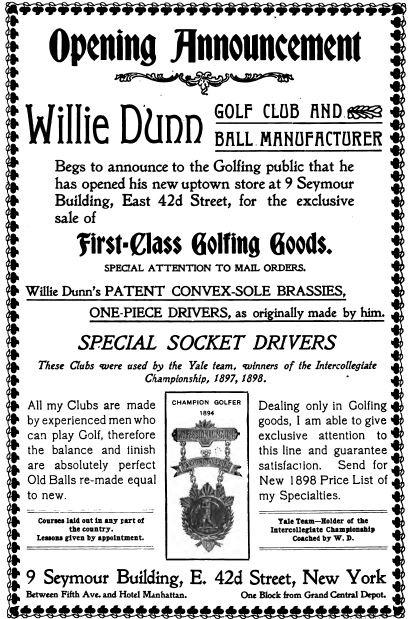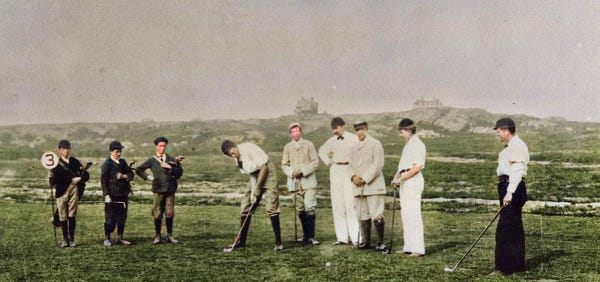This is part of a series on the Men’s Collegiate Championships
Intercollegiate Golf Association (IGA) Championship Era: 1897-1938
The first intercollegiate golf championship, run by the IGA, was supposedly open to any university in the United States and Canada that wanted to send a team of six players or as few as one player for the individual competition. Practically speaking, though, it was a championship among the five originally invited schools: Yale, Columbia, Harvard, Princeton, and Penn. Although the original match played the year before only featured the first two teams, the championship this year brought together players from those universities as well as Harvard and Princeton. The championship would remain a 4-team affair until Penn finally sent a team in 1901.
Ardsley Casino club served as host again at the behest of golf chairman Roderick Terry Sr. In order to ensure stability to the tournament in its early years, the club made an agreement with the IGA to host the event for the first three playings, and made a big show of going all out to provide nice amenities including stunning awards (see below).
Intercollegiate Championship #1: May 12-14, 1897
First off, note the date change from the match last year in November to the championship now in May. I’m not saying this has anything to do with football, but I’m not not saying it. The true purpose of the dates being set in May is likely much more mundane and close to the reason(s) the championships are held in the summer now. That said, we’ll soon see this isn’t a settled debate.
All of the build up and anticipation was unfortunately hampered by a downpour the day before the stroke play portion, thoroughly soaking the course and raising scores well above those expected - John Reid Jr had recently lowered the course 18-hole record to 83. After that though…more rain. Ugh, all the rain. The teams slogged through it, but the precipitation significantly hindered play to the point where the team match play finals was delayed by half a day.
Weather aside, the championship was deemed an immense success with several prominent national newspapers proclaiming it the start of something exciting. Not long after, Yale’s WR Betts brought the college game further into the spotlight when he “covered himself with glory” by defeating Charles Blair Macdonald to reach the US Amateur finals.
Format
Individual stroke play (18 holes)
Went around the 9-hole course twice on the first day.
The draw for the bracket was randomized.
Team match play (4 teams, 6 players each)
Playing the same holes-won format as the match last year where the net holes won by a player in their match is added to the team total.
Bracket was randomized, perhaps by drawing lots as they did with the individual match play in later tournaments.
Results
Individual Champ: Louis Bayard Jr [Princeton]
Louis Bayard Jr, Princeton’s captain and son of one of the founding members of Baltusrol Golf Club, showed out among a crowd of heavy hitters. He backed up this performance by securing Princeton’s only points in the team match against Yale the next morning, again besting Roderick Terry Jr (by 4 holes). Bayard had risen to prominence the previous Summer by making the match play portion (top 16) of the US Amateur, losing to eventual champion HJ Whigham in the first round.
Team Champ: Yale (1)
Yale proved to be the most weather-proof team, first beating Princeton 35-4 then Harvard 24-4. Roderick Terry Jr lived up to the billing, setting a new amateur tournament record of 84 in his Finals match. Since they were playing the type of medal match where each hole was played out fully, this score would count for the record.
Intercollegiate Championship #2: May 4-7, 1898
The talk leading up to the second annual championship was not just war on the course but off it as well, given the serious questions as to whether the Spanish-American war would affect play (it didn’t thankfully). As we’ll see later, war tended to have a profound impact on the championships.
All of the schools felt they came in with a stronger team than the year before. Some national columnists believed Harvard to be a close favorite with the reigning champs from Yale. The individual championship - moved to be played after the team event and adding a match play element just like the US Amateur - was said to be up for grabs. The format tinkering had begun.
Quick aside: You may notice that these results differ from those listed in the NCAA record book (as of 2022), which has these same results entered as the third championship rather than the second. To their credit, the mixed-up results between championships #2 and #3 goes all the way back to at least the 1909 issue of The American Golfer and was solidified by the time the 1916 edition of The American Annual Golf guide had been published. We’ll speculate more on the possible reasons for this in the next post, but it is important to note because of the drama for the Ardsley Trophy.
Format
Team match play (4 teams, 6 players each, net holes scoring, random draw)
Individual stroke play qualifier (18 holes)
All 18 holes now completed at Ardsley so they played course once through
Individual match play (8 players, also random draw, traditional 18 hole matches)
Results
Team Champ: Yale (2)
Harvard came in expecting to challenge the defending Yale champs, but Goliath reigned supreme with a close 12-3 victory. The draw happened to be the same as last year, and just like last year the Yale team proved to be better in the rain as they played the Finals in a drizzle interspersed with “brisk showers.” Let’s not go throwing the word “dynasty” around, but things were looking pretty good for the 2-time champs, warranting the poses seen below
Medalist: Roderick Terry Jr [Yale]
A total of 22 players played in good weather (for once) as Roderick Jr got revenge on his runner-up finish last year to take medalist honors. Princeton captain WD Vanderpool survived a 3-for-1 playoff to secure the 8th MP spot
Individual Champ: James F Curtis [Harvard]
James Curtis earned Harvard its first golf championship by running a gauntlet in the first ever collegiate match play event, defeating the Princeton captain/champion WD Vanderpool (19 holes), then Yale superstars Roderick Terry Jr (4&3) and John Reid Jr (5&4). Curtis’s name is familiar to golfers today not for his own accomplishments, but rather those of his famous sisters Harriot and Margarete who were perhaps the first female golfing superstars and for whom the Curtis Cup is named. At the time of his win, James’s cousin Laurence Curtis was the (second ever) USGA President.
The Awards
Ardsley generously provided an impressive array of awards at the tournaments they hosted, setting a standard used for many years prior to the NCAA take-over of the event. We plan to do a mini series specifically on the various trophies awarded for this championship before the NCAA standardized everything and the final unique traveling trophies were taken out of circulation sometime in the 1980s. If I sound a little bitter on behalf of the players frankly it’s because I am, these things were really cool and tied together the history of the event. /rant
Team Championship Trophy = “Ardsley Cup”
The large loving cup presented to the Yale team champions in 1897 was perhaps a little too nice, valued at $250 (somewhere north of $8k in 2022 dollars). Not long after the first tournament the conditions for keeping the trophy were changed from a single victory to needing three team wins (not necessarily consecutive), which was a fairly standard practice for competitive trophies/awards at the time.
Miniature trophies for team players
A unique prize each year were the 3-inch replica trophies that were presented to each of the players on the winning team
Individual Trophy
Unlike the team trophy, the trophy won by the individual was made to be kept. In the first tournament, the individual champion was determined purely through stroke play and received the trophy emblazoned “Intercollegiate Champion 1897”. Starting with the second championship, the stroke play portion was made the qualifier for the match play bracket which determined the winner of a similar trophy inscribed “Intercollegiate Champion 1898”.
Individual Medalist
There does not seem to be any indication of a medalist prize for the last two times that Ardsley hosted the event, however the generosity of the club as well as the later tournament awards suggests that the medalists in 1898 likely received a gold medal of some kind. More research is being done here.
BONUS: First Ever “What’s In the Bag”
By 1898, Willie Dunn was a very well respected club maker and inventor, player, and golf course designer. Without delving too far into the weeds, just know that Dunn was a golf professional due to his position as the golf pro (and designer!) of Ardsley and Shinnecock Hills before that. His clubs were apparently used by at least some of the champion Yale players.
There are two special things to note with this ad placed in the USGA Golf publication:
Not only are the Yale golfers cited as users of the clubs, Dunn lists himself as having “coached” the team. Perhaps this was some reference to being more of an instructor to one or more of the Yale players since extensive research done by Yale golf historians indicate Robert Pryde was the Yale trainer/coach at this time. More research here is needed. Interestingly, though this is the only direct connection we have found, Dunn is linked to college golf through a number of the courses he either designed or otherwise was a major contributor (early golf course design/architecture is a tangled web to put it lightly), including: Ardsley, Lawrence Harbour, Apawamis, and even Princeton’s course Springdale,
The title of “Champion Golfer 1894” and the pictured medal for winning the US Open is much more complex than in would seem. The following twitter thread is a very interesting read on the subject
Thanks for reading!
Up Next: The Second Championship of 1898
In the next post we will cover Intercollegiate Championship #3 - the last held at Ardsley - which was moved up from Spring 1899 to the Fall of 1898 for…reasons. A Yale win would secure Ardsley Cup.





